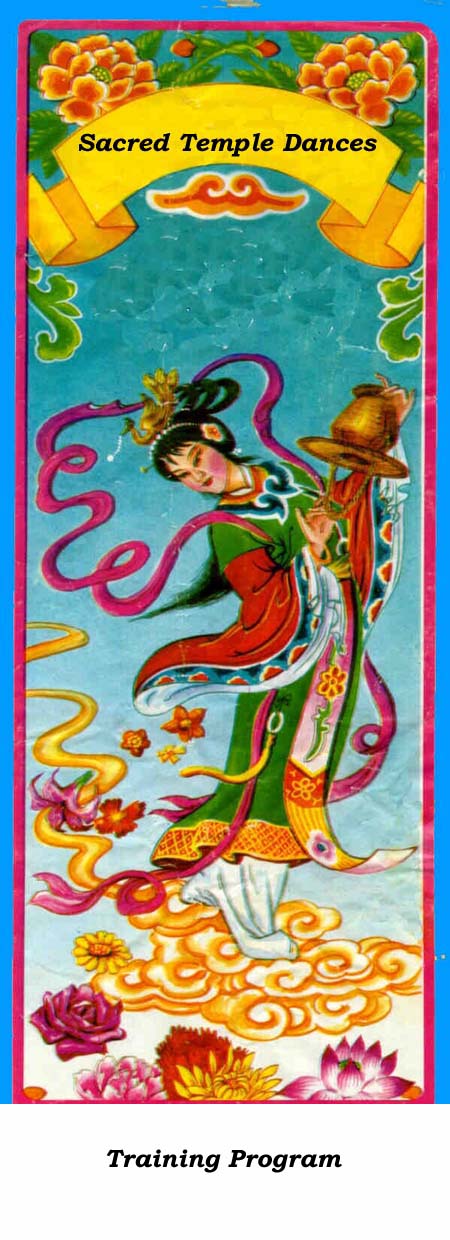

Course Description:
From the famous Shaolin (Zen) and Wu Tang (Taoist) monasteries of north China comes this vigorous approach to dynamic health. Movement training has been used in China for 4500 years to achieve super-fitness and multi-level integration of self. We practice traditional, choreographed movement sequences and routines for grace, agility, flexibility, strength, concentration, awareness. These kinetic keys open doors to consciousness and act as a cathartic, cleansing force upon the deepest part of our nature.
Our tools for the dance studies include all parts of the body (even eyes!), and equipment such as fans and swords. There are three components of the study: stretching/loosening of muscles and joints, hand-eye-foot combination drills, and martial-flavored "dance" forms of continuously linked postures. The forms work is characterized by extended arm movements, deep stances, high kicks—often mimicking animal characteristics.
CAUTION!
This is not recreational "folk dancing." It is extremely challenging work on all levels. It is not wise for the unfit to take this training. Properly executed, the forms become effective vehicles for moving meditation work and inner awareness. Such a process can only be effectively utilized if we know how to recognize and adapt its principles within our lives. As the student progresses through the training, there is a self "unmasking" effect as the ego faces its own limitations and is stripped away from pivotal posturing in creating life-meaning.This ‘unmasking’ may make a student acutely aware of deepest fears or apprehensions, and the temptation to run away or escape from the study can be very powerful. These teachings concern the basic nature and structure of consciousness in order to deal with stress or phobias that occur during the process of unmasking. Specific therapeutic practices and methods of concentration are then applied to neutralize afflictions which arise.
This is the conceptual and actual basis for direct experience of the mind -body. This training offers opportunity to consciously change patterns of suffering that constitute what we loosely term our ‘Self.’
Teaching Methods:
Course Outline:
The material presented at each class increases in complexity and intensity as determined by each student’s accommodation to the work-load. Each meeting is characterized by these components of the training: